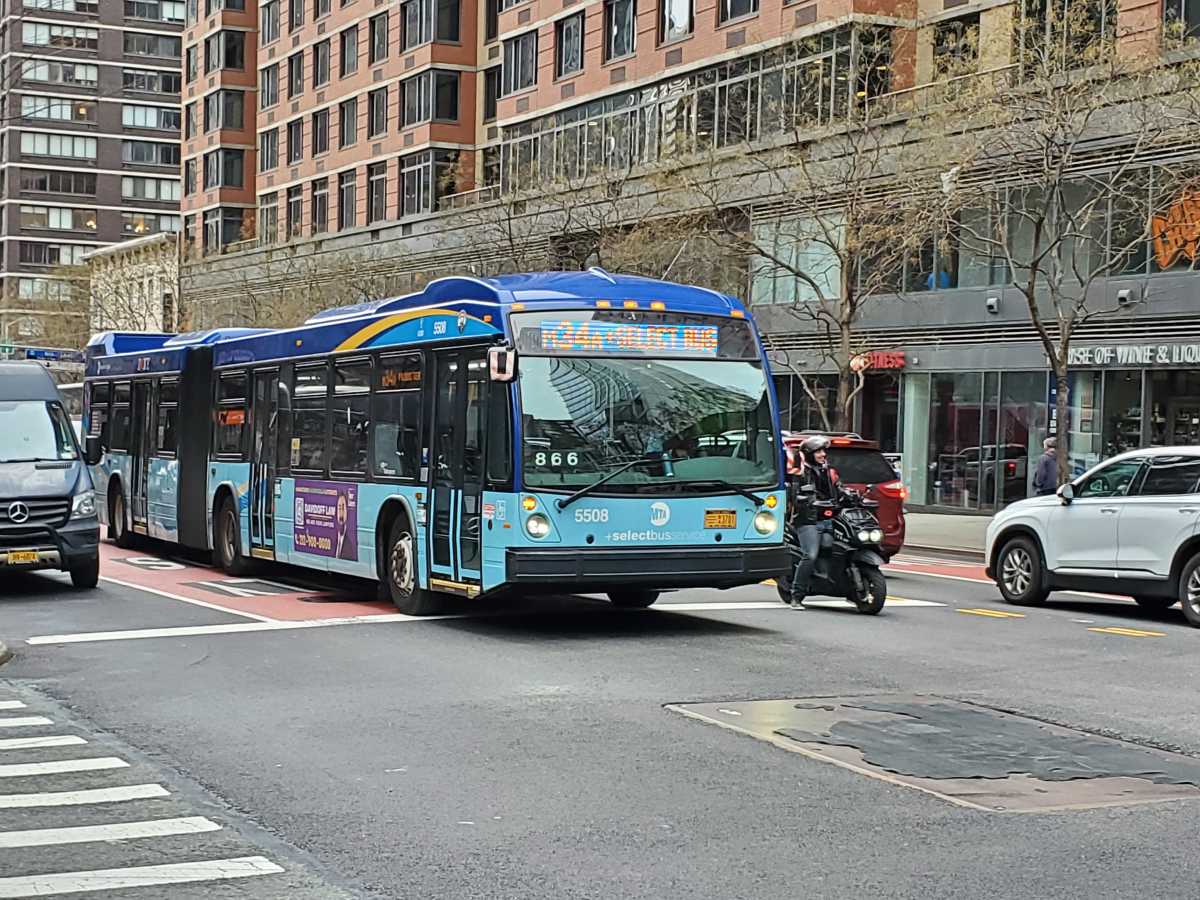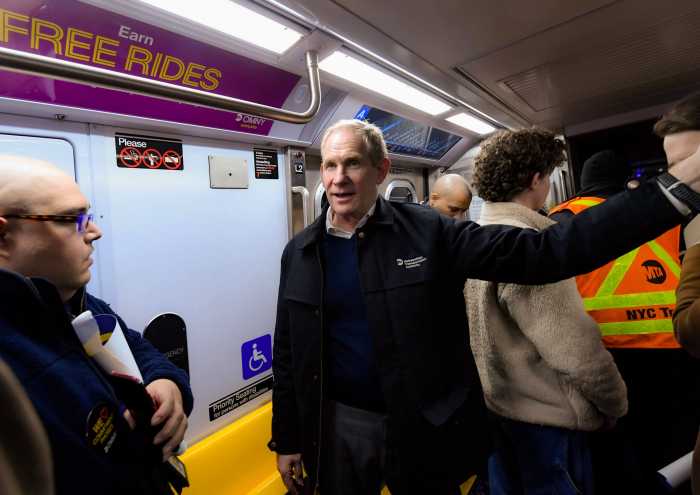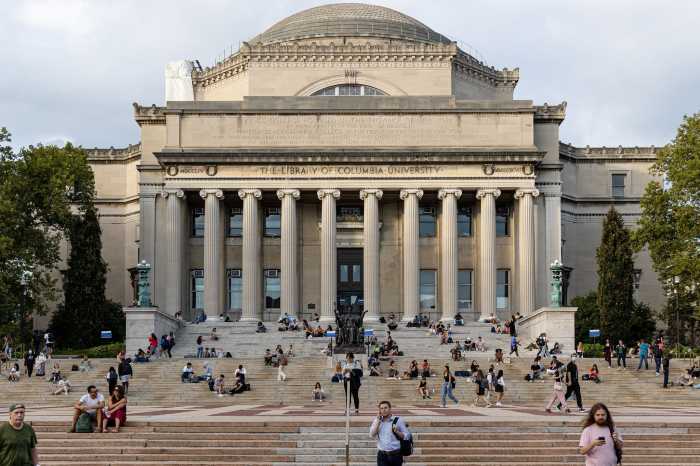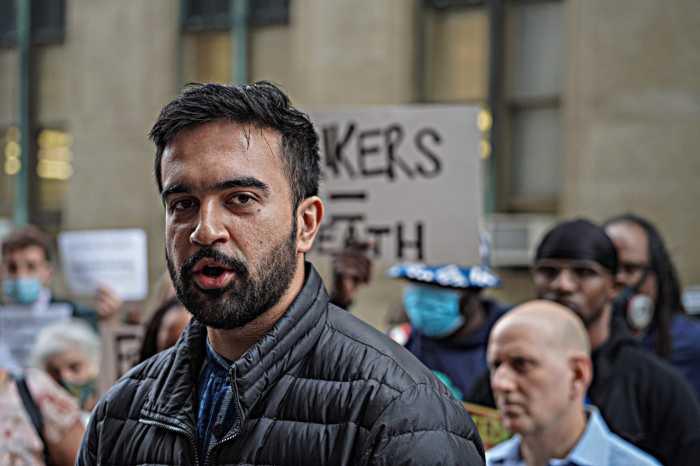The free rides will soon be over.
The MTA’s experiment in fare-less city bus service will soon come to an unceremonious end, after Albany lawmakers did not reauthorize it in the newly-enacted state budget.
One MTA bus in each borough has been fare-free since September as part of a pilot program enacted in last year’s budget, which required the MTA to undertake the experiment as a condition of its financial rescue package.
The pilot cost $15 million to run on the five lines — the Bx18 in the Bronx, the B60 in Brooklyn, the M116 in Manhattan, the Q4 in Queens, and the S46/96 in Staten Island — and lawmakers sought to reauthorize it at triple the size in the budget this year.
But while supporters secured over $12 million to enhance service frequency on local and express routes, the fare-free pilot was left on the cutting-room floor.
“I’m saddened we were not able to extend or expand the successful fare-free bus pilot,” said Queens Assemblymember Zohran Mamdani, the prime backer of the pilot in Albany’s lower chamber. “This was a crucial, universal program that put money back into the pockets of working-class New Yorkers, giving them economic relief and peace of mind. This has real consequences – 1 in 5 New Yorkers can’t afford the fare.”
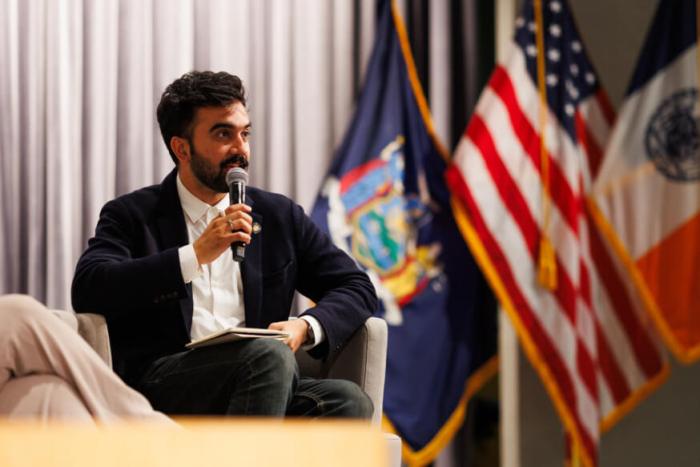
Mamdani contends that the $45 million needed to expand the pilot to 15 lines across the city “could be found in the couch cushions of NY’s budget.”
MTA Chair and CEO Janno Lieber cast aspersions on the pilot last week at a breakfast event with some of the city’s wealthiest movers and shakers, opining that “free buses send the wrong message at a moment that we’re trying to push back on fare evasion.”
Lieber, the MTA’s chair and CEO, said at Wednesday’s Crain’s Power Breakfast that based on the MTA’s analysis, the program didn’t appear to be “benefitting the lowest-income folks.”
The pilot was intended to gauge the impact of free service on bus ridership, speed, and service delivery; upon the conclusion of the pilot, the MTA will issue a report on the impacts. The MTA has not yet made any data public, though in December, New York City Transit president Rich Davey told Our Town NY ridership was up 7-20% on the free lines.
New York was one of several cities to experiment with free bus service. Boston has made several lines fare-free in the past few years while Kansas City has had free bus and streetcar service since 2019. Washington DC was set to make its buses free last year, but the program has been delayed following a request as such by the capital’s transit agency.

The MTA did not immediately say when the pilot will end, though the latest possible date is in September of this year, a year after activating.
Lawmakers and transit advocates did, however, find space to celebrate, securing $12.3 million for enhanced bus service on select lines, including the M35, the X6, and the X64 buses.
“New Yorkers have spoken loud and clear that they want a more reliable and safe public transit system,” said Queens Senator Michael Gianaris, the Democratic deputy leader and prime backer in the upper chamber of the package. “We are delivering a significant level of funding to provide improved service, and I will continue to fight to make transit more affordable and desirable.”
The funding was, however, far less than the $45 million sought to enhance service ahead of the expected June start of congestion pricing, which is expected to bring an influx of new riders to mass transit as they’re disincentivized from driving. Before London enacted its own congestion pricing program, bus service was increased by 17%, according to Gianaris and Mamdani.
Read More: MTA Tests Subway Platform Safety Barriers



